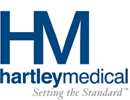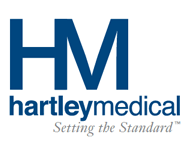Following the opening ceremonies for NANS, we attended a cocktail gathering focused on targeted drug delivery (TDD). There, I met Dr. Joshua Wellington, who has implanted nearly three thousand intrathecal pumps over his 20+ years of practice. I have enjoyed his talks regarding Medtronic’s Control Workflow, and was excited to get a chance to meet, formally. Our discussion quickly focused on the disconnect between TDD and today’s young pain physicians, why it exists, and how we might be able to bridge the gap and improve therapy adoption.
Dr. Wellington was insightful, offering thoughts from various perspectives. The overarching theme, however, seemed to be a lack of comprehensive training in/exposure to TDD in the early years of practice. Often, pump therapy isn’t a substantial treatment modality for many pain practices. Thus, extensive training in the many facets of TDD can be quite limited for fellows. As a result, the usual stigmas of difficult patients and ER calls are often what young doctors obtain from the experience; leaving many of them uninterested in pursuing the therapy as they embark on their careers.
Dr. Wellington acknowledged his good fortune of a fellowship at an institution where pumps are well-incorporated, which he says is “really rare”. However, it stresses that practices or institutions with efficient pump programs would do much to create familiarity and, thus, comfort with the various moving parts of intrathecal drug delivery (ITDD). By necessity, these programs typically have well-established protocols and infrastructures for delegating duties in all areas of pump therapy, rather than just refills.
Still, the stigmas surrounding pumps, according to Dr. Wellington, existed when he was a fellow, too. How, then, did he become such a staunch proponent of pump therapy? The difference, he says, was that he was surrounded by the impact of TDD. Dr. Wellington “saw right away what it did for the patients, and that was it.” Intrathecal drug delivery had made its mark, and he says he was committed to enduring whatever challenges in order to ensure his patients were given the option of TDD.
At some point in time or another, we’re all patients. We want to believe our doctors are providing us with every opportunity to feel better. So, when you meet one who has put forth the effort to understand a therapy and endure its learning curves in order to add value to the lives of his or her patients, hope feels renewed, and you’d be grateful to be in the care of such a doctor.
Pain fellowships are relatively brief. There isn’t sufficient time to devote to any particular modality of pain management, let alone one with as much nuance as TDD. Still, my brief discussion with Dr. Wellington was among the more refreshing interactions at NANS. He remained upbeat about the prospects of improving adoption and demonstrated that, while committing sufficient time to properly guide young physicians through the many hows of ITDD isn’t always practical, let alone feasible, committing to underscoring its life-changing impact in patient care, the why, may just be all the exposure a young physician needs to take the baton and run with it for years to come.


Leave A Comment